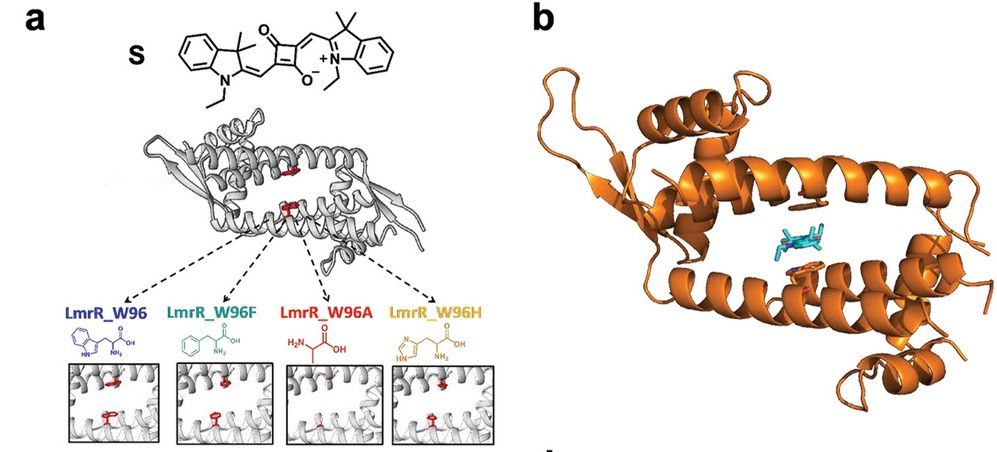Best performing deep-red bio-HLED reported to date
Inorganic and organic light-emitting diodes (ILEDs and OLEDs, respectively) are quickly replacing incandescent light bulbs and compact fluorescent lamps. The reasons for the success are easy to understand. For instance, ILEDs’ performance has met the market requirements for in-/out-door applications with single-point sources.
However, ILEDs cannot be considered a sustainable solution as of today. One of the reasons is that they use either rare-earth or toxic colour down-converting filters or inorganic phosphors – substances that exhibits the phenomenon of luminescence. Another one is the expensive and environmentally unfriendly manufacturing processes for both the phosphor and the emitting chip. And, finally, there are no efficient recycling protocols.
Unfortunately, OLED technology is not the solution, even though it is a very promising technology for large-area and flexible lighting applications. This is because the need of a multilayered structure prepared partially via evaporation techniques, of stable blue-emitters, and of protective encapsulation barriers, make OLEDs very expensive for widespread use.
In this scenario, hybrid LEDs (HLEDs) have been reborn, promising to achieve sustainable lighting systems without losses in device performance. HLEDs address the weaknesses of ILEDs by replacing inorganic phosphors with organic color down-converting filters or organic phosphors that combine organic emitters (e.g., small molecules, coordination complexes, polymers, or carbon dots, among others) with polymers, metallic organic frameworks, etc., as packaging matrices.
Though research on HLEDs started with this century, only recently the field has witnessed some major advances. Among them, biophosphors, that make use of biogenic components.
Three families of biophosphors have been developed to date. In a chronological order, artificial emitters were firstly dispersed in biogenic matrices, such as deoxyribonucleic acid, proteins, polysaccharides, and cellulose, reaching maximum efficiencies of around 35 lm/W (read lumen per Watt, luminous efficacy is a measure of how well a light source produces visible light). Then, the bio-HLED concept was settled when fluorescent proteins were stabilized in polymer coatings, resulting in less than 10% intensity loss after 100 h of operation. Enhancing the polymer matrix has led to bio-HLEDs with stabilities of more than 150 days at circa 130 lm/W. Finally, fully biogenic phosphors, in which both the packaging matrix and the emitter are of biological origin (e.g., silk fibroin as packaging matrix and fluorescent proteins as emitters) have been recently reported, achieving efficiencies of 40 lm/W.

A major bottleneck in bio-HLEDs is to find highly efficient and stable red-emitting fluorescent proteins. Thus, new strategies to design highly emissive and stable deep-red artificial fluorescent proteins are needed. Now a team of researchers presents 1 a new red-emitting artificial fluorescent protein combining a drug-like molecule, Lactococcal multidrug resistance Regulator (LmrR), as a protein host with a symmetric and non-water soluble archetypal squaraine dye (S) as a guest emitter. The researchers describe an easy-to-do concept toward stable and efficient red-emitting artificial fluorescent proteins following a hybrid host–guest combination of artificial and biogenic moieties; also a new route toward highly performing water processable red biophosphors using emitters that are otherwise soluble in toxic solvents, and, importantly, the best performing deep-red bio-HLED reported to date.
LmrR is a homodimeric protein where two chains form a large hydrophobic pocket suitable for supra-molecular assemblies. LmrR has already shown high versatility to accommodate organic dyes with different structures. As LmrR has no need of a covalent co-factor attachment combined with the non-specific nature of the complexation, it allows for easy dye screening, making LmrR a potential highly stable scaffold. Add the resonance-stabilized zwitterionic structure of S with a strong emission in the far-red region makes, and you have the ingredients for a very attractive for deep-red artificial fluorescent protein.
First, the team determined the best protein pocket (aromaticity, polarity, charge, etc.) to stabilize S in water using four LmrR variants (position 96 with tryptophan, histidine, phenylalanine, and alanine). Computational and time-resolved spectroscopic findings suggested that the tryptophan is instrumental toward achieving artificial red-emitting fluorescent proteins with yields above 50% stable over weeks. These features are further enhanced in the polymer coating (yields above 65% stable over months) without affecting emission colour. Finally, the researchers fabricated deep-red bio-HLEDs featuring stabilities of 800 h. This represents threefold enhancement compared to reference devices.
This work is a landmark, showing that the combination of artificial emitters with selected protein scaffolds represents a promising approach to tackle the limitation of poor emissive fluorescent proteins in order to get highly performing deep-red bio-HLEDs.
Author: César Tomé López is a science writer and the editor of Mapping Ignorance
Disclaimer: Parts of this article may have been copied verbatim or almost verbatim from the referenced research paper/s.
References
- Ferrara, S., Mejias, S. H., Liutkus, M., Renno, G., Stella, F., Kociolek, I., Fuenzalida-Werner, J. P., Barolo, C., Coto, P. B., Cortajarena, A. L., Costa, R. D. (2022) Designing Artificial Fluorescent Proteins: Squaraine-LmrR Biophosphors for High Performance Deep-Red Biohybrid Light-Emitting Diodes. Adv. Funct. Mater. doi: 10.1002/adfm.202111381 ↩